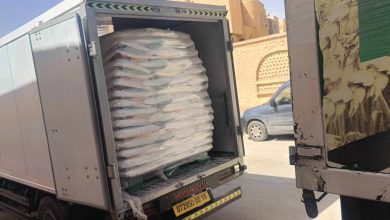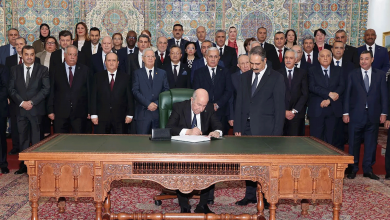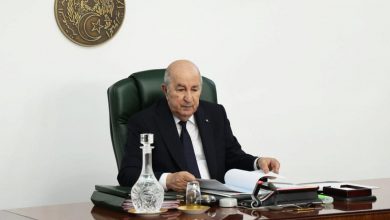Donald Trump’s whirlwind tour of Asia has been marked by a flurry of diplomatic activity, trade negotiations, and strategic maneuvering, signaling a renewed focus on the region amidst growing global economic and geopolitical uncertainties. The former-and-current U.S. President, embarking on his first major international trip since regaining office, aims to solidify alliances, broker peace deals, and, most importantly, de-escalate the simmering trade war with China.
Trump’s journey began in Kuala Lumpur, Malaysia, where he oversaw the signing of a ceasefire agreement between Thailand and Cambodia, a move hailed as a significant step towards regional stability. The agreement, brokered on the sidelines of the ASEAN summit, aims to end the most intense border clashes between the two Southeast Asian nations in decades. Trump lauded the ceasefire as a “major achievement,” underscoring the U.S.’s commitment to maintaining peace and security in the region.
Beyond the ceasefire, Trump also secured key trade agreements with both Malaysia and Thailand. A landmark deal with Malaysia focuses on bolstering U.S. access to critical rare earth minerals. Under the agreement, Malaysia has pledged to refrain from imposing any export bans or quotas on these vital resources, while the United States has agreed to impose a 19% tariff on selected Malaysian goods. This deal is particularly significant given the global race to secure supplies of rare earth elements, essential components in a wide range of technologies, from smartphones to electric vehicles and defense systems. The agreement also includes provisions for accelerating the development of Malaysia’s rare earth minerals sector in collaboration with American companies, promising further economic benefits for both nations.
In Thailand, Trump reportedly finalized a significant agreement concerning the trade of rare earth minerals, although specific details remain scarce. The U.S. administration has emphasized the strategic importance of diversifying its supply chains and reducing reliance on China for these crucial resources.
During his stay in Kuala Lumpur, Trump also held a meeting with Brazilian President Luiz Inácio Lula da Silva. Despite past tensions, both leaders expressed optimism about forging stronger economic ties. Trump stated he believed that they would be able to reach some good deals, signaling a potential thaw in relations between the two major economies.
From Malaysia, Trump traveled to Tokyo, Japan, the second stop on his Asian tour. He met with Emperor Naruhito and held talks with newly-appointed Prime Minister Sanae Takaichi. Trump expressed admiration for Takaichi, noting her close relationship with the late former Prime Minister Shinzo Abe, with whom Trump enjoyed a strong rapport. Takaichi, in a phone call prior to the visit, assured Trump that strengthening the alliance between Japan and the United States is the top priority of her administration on both the diplomatic and security fronts.
For more information about Economie, check our dedicated section.
Japan has largely avoided the steep tariffs imposed by Trump on other countries, designed to address what he sees as trade imbalances that allow other nations to “plunder the United States.” While Japan has already committed to $550 billion in investments in the U.S. in exchange for tariff relief, Takaichi hopes to further persuade Trump with promises to purchase American trucks, soybeans, and gas. These commitments are aimed at further reducing the trade deficit and strengthening the economic partnership between the two allies.
The centerpiece of Trump’s Asian tour is expected to be his meeting with Chinese President Xi Jinping in Busan, South Korea. This marks the first face-to-face encounter between the two leaders since Trump’s return to the White House. Trump has expressed confidence in reaching an agreement to de-escalate trade tensions, stating to reporters in Kuala Lumpur, “I think we’re going to make a deal.” His optimism follows two days of meetings between U.S. Treasury Secretary Scott Besant and Chinese Vice Premier He Lifeng, which both sides described as productive.
China has confirmed that it has reached a preliminary consensus with the United States on resolving their trade disputes. Global markets are eagerly awaiting the outcome of the meeting between Trump and Xi, hoping it will lead to a halt in the trade war triggered by Trump’s sweeping tariffs, especially after the recent dispute over Beijing’s restrictions on rare earth mineral exports. The stakes are high, as a resolution to the trade war could provide a significant boost to the global economy and reduce uncertainty for businesses and investors worldwide.
Adding another layer of intrigue to his South Korean visit, Trump has expressed openness to meeting with North Korean leader Kim Jong-un. Such a meeting would be a significant development, marking the first encounter between the two leaders since their last meeting in 2019. South Korea’s Unification Minister has stated that there is a “high” possibility of a meeting between Trump and Kim. The two leaders previously met during Trump’s first term in office at the Demilitarized Zone (DMZ) separating the two Koreas. Kim Jong-un has also indicated his willingness to meet with the U.S. President if Washington abandons its demand that Pyongyang unilaterally dismantle its nuclear arsenal. A potential meeting could offer a chance to revive stalled denuclearization talks and reduce tensions on the Korean Peninsula, a long-standing U.S. foreign policy objective.
Trump’s Asian tour is therefore a multifaceted endeavor, encompassing trade negotiations, diplomatic bridge-building, and strategic positioning. The outcomes of his meetings, particularly with Xi Jinping and potentially Kim Jong-un, will have significant implications for the global economy, regional stability, and the future of U.S. foreign policy in Asia. The world watches with bated breath as Trump seeks to reshape alliances and navigate the complex landscape of the region.




